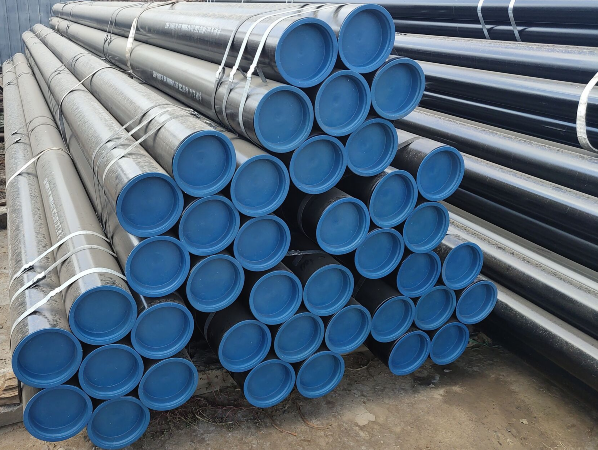
According to the type of pickling equipment: tank pickling, semi-continuous pickling, full continuous pickling, tower pickling.

(3) The generated atomic hydrogen reduces iron oxides to ferrous oxides which are susceptible to acid action, and then reacts with acid to be removed (reduction action).
Seamless steel tube pickling process:
The pickling process mainly includes immersion pickling, spray pickling and acid paste rust removal. Generally, the dipping pickling method is used, and the spraying method can be used in mass production. Steel parts are generally pickled in 10% to 20% (volume) sulfuric acid solution at a temperature of 40°C. When the iron content in the solution exceeds 80g/L and the ferrous sulfate exceeds 215g/L, the pickling solution should be replaced. At room temperature, pickling steel with 20% to 80% (volume) hydrochloric acid solution is less prone to over-corrosion and hydrogen embrittlement. Because acid has a strong corrosion effect on metals, it is necessary to add corrosion inhibitors. After cleaning, the metal surface becomes silvery white, and the surface is passivated at the same time, improving the corrosion resistance of stainless steel. The process of using sulfuric acid aqueous solution with a concentration of 5% to 20% to remove scale and adhered salts on the surface of the workpiece is called sulfuric acid pickling. The industrial concentrated sulfuric acid sold on the market usually contains H2SO475%~97% (mass fraction), and brown industrial sulfuric acid solution can also be used, which contains H2SO475%~78% (mass fraction).
In order to eliminate surface adsorption of diatomaceous earth carrier and reduce chromatographic peak tailing, the carrier needs to be acid-washed or alkali-washed before use. Pickling is to soak the carrier with 6mol/L hydrochloric acid for 2h or concentrated hydrochloric acid for 30min, filter, wash with water until neutral, and dry. Pickling can remove iron, aluminum, calcium, magnesium and other impurities on the surface, but cannot remove silanol groups. Acid-washed supports are suitable for the analysis of acidic samples.
Read more: Galvanized Seamless Steel Pipe
